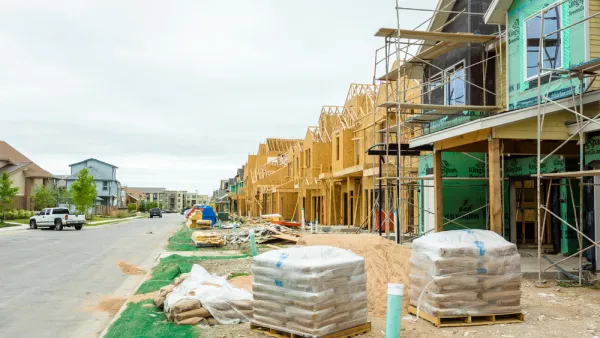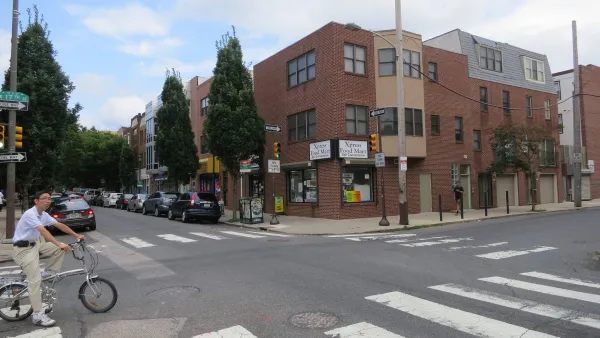A report released this week by the U.S. EPA finds that 71 percent of the country's large metro regions saw an increase in the development of infill housing over the latter half of the last decade. Greenfield development still dominates, however.
The good news in the Environmental Protection Agency's newly released report, "Residential Construction Trends in America's Metropolitan Regions: 2012 Edition" (PDF), is that "infill has become a significant portion of the U.S. housing market." In a press release accompanying the publication of the report, the EPA noted that, "[f]or example, eight out of ten new homes in San Jose, Calif. were infill. New York, Los Angeles, and San Francisco all saw a majority of new home construction in previously developed areas during the same time period."
The bad news? That significant portion accounts for only 21 percent of new home construction, meaning the remaining 79 percent "was built on undeveloped land outside existing communities." Furthermore, finds the report, "[n]early all metropolitan regions are growing outward more than they are growing inward."
Why should we be building more infill? As the EPA notes, "this type of development provides economic and public health benefits to metropolitan areas while protecting the local environment...Infill housing has also been shown to help raise property values, increase a community’s tax base, and attract retail businesses to serve the larger residential population."
FULL STORY: EPA Study Reveals Shift in Housing Developments Across the U.S.

National Parks Layoffs Will Cause Communities to Lose Billions
Thousands of essential park workers were laid off this week, just before the busy spring break season.

Retro-silient?: America’s First “Eco-burb,” The Woodlands Turns 50
A master-planned community north of Houston offers lessons on green infrastructure and resilient design, but falls short of its founder’s lofty affordability and walkability goals.

Delivering for America Plan Will Downgrade Mail Service in at Least 49.5 Percent of Zip Codes
Republican and Democrat lawmakers criticize the plan for its disproportionate negative impact on rural communities.

Test News Post 1
This is a summary

Test News Headline 46
Test for the image on the front page.

Balancing Bombs and Butterflies: How the National Guard Protects a Rare Species
The National Guard at Fort Indiantown Gap uses GIS technology and land management strategies to balance military training with conservation efforts, ensuring the survival of the rare eastern regal fritillary butterfly.
Urban Design for Planners 1: Software Tools
This six-course series explores essential urban design concepts using open source software and equips planners with the tools they need to participate fully in the urban design process.
Planning for Universal Design
Learn the tools for implementing Universal Design in planning regulations.
EMC Planning Group, Inc.
Planetizen
Planetizen
Mpact (formerly Rail~Volution)
Great Falls Development Authority, Inc.
HUDs Office of Policy Development and Research
NYU Wagner Graduate School of Public Service




























